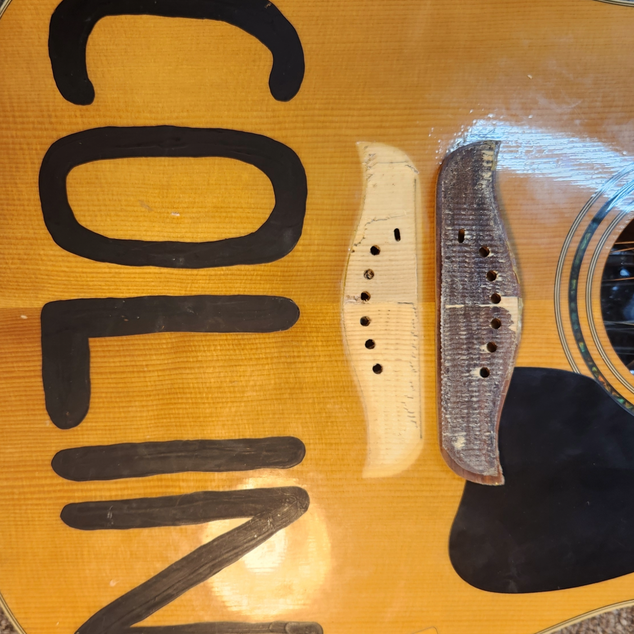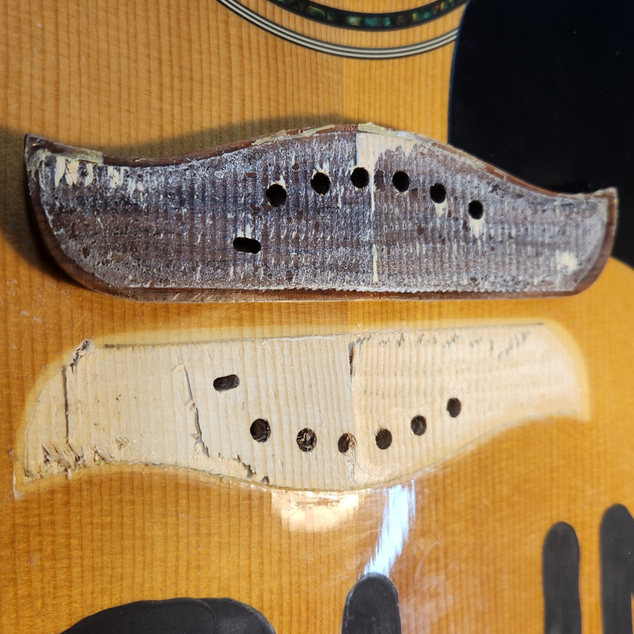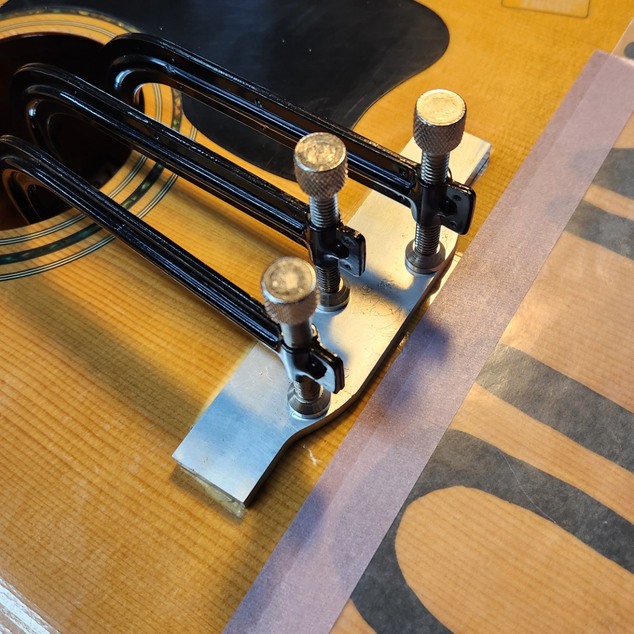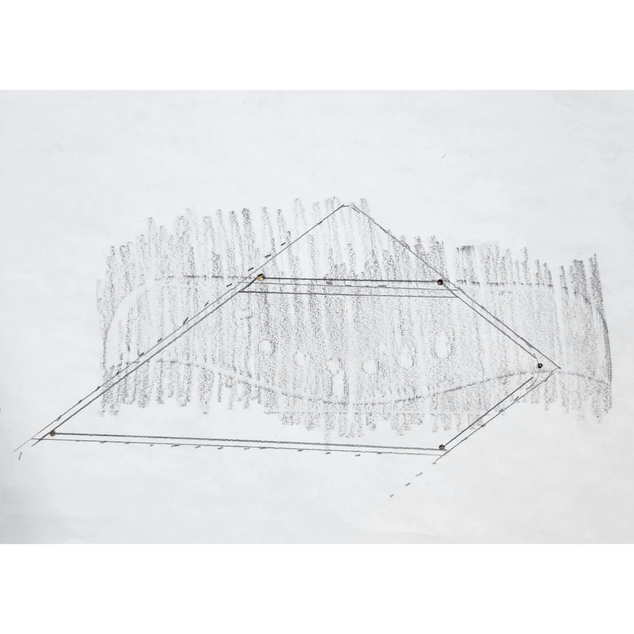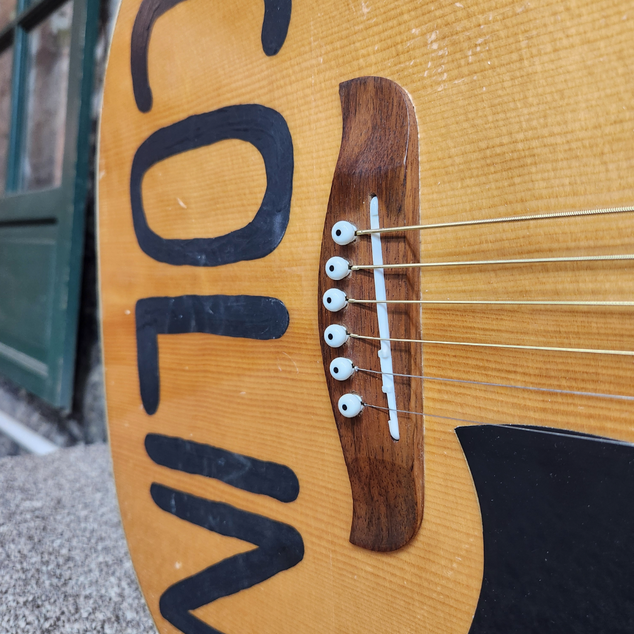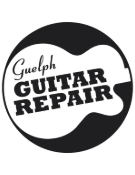Oscar Schmidt:
What is a Guitar Worth?
Grace Da Maren
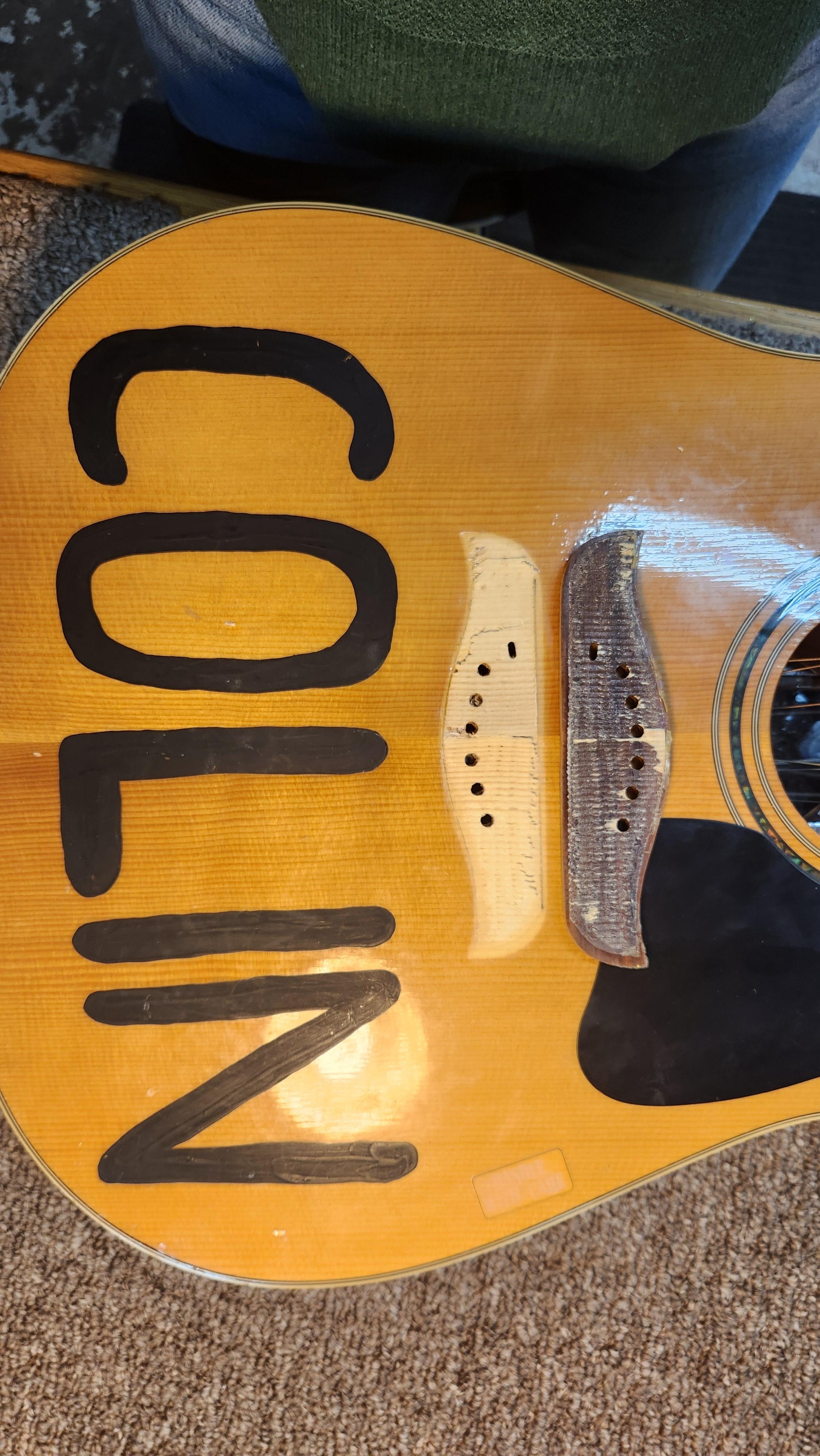
Let's be realistic: what is a guitar that cost you $200 in the '80s worth today?
My client: I know it’s not an
expensive guitar, but it’s important to me.
Me: Why is it
important to you?
Client: My cousin
Colin passed away in highschool. For a memorial in his honour, I painted his
name on my guitar and played a song for him.
---
At dropoff, the bridge of this student-model Oscar Schmidt acoustic was peeling up, and the belly was bulging. There were nicks and chips all over the guitar, but there was no sign of damage to the letters painted with black acrylic paint, that spelled his cousin’s name. "COLIN" still appeared as perfect as the day it was painted. It was clear to me that repairing the guitar was important, but most of all, I needed to preserve this tribute. I couldn’t risk damaging that name, not with tools, or water for clean up. I couldn't putting tape over the name, no matter how low-tack the tape promised to be. A clever masking strategy occurred to me in the middle of the night (when all good ideas come to me!). I'd tape down some waxed paper over the name. That’ll keep my tools and any moisture off of it!
Someone had tried to do a quick fix on this guitar before. They injected a little glue under the wings, and tried to clamp it up as best they could. I have never heard of this intervention being a long-term success. The bridge came off with relative ease, and underneath was the telltale rim of finish.
Sometimes manufacturers mask off most of a bridge location, spray finish, then glue the bridge on. The hope is the bridge connects enough with the bare wood that it holds well. Over the years the rear edge of the bridge (toward the butt of the guitar) gradually separates, and that separations spreads across the whole back edge of the bridge.
My pallet knife dug beneath the top layer of wood during the bridge removal process, so I just added a gluing session into the after-removal care plan. I also put the guitar through some belly reduction sessions. Basically I clamp and iron the guitar belly flat. I've got these cauls designed by TJ Thompson that I heat up, and clamp around the bridge location, and leave til they cool down (a couple hours). I did about 4 sessions.
For a really successful gluing operation I made a clamping caul for inside the guitar. This fit exactly between the braces and supported the location of the bridge, keeping it as flat as possible.
The bridgepin holes were slotted and ramped to get the strings well seated, and to maximize the break angle over the saddle.
This guitar was wonderful to work on. I really enjoyed returning it to a playable and trustworthy condition.
I also love the prolonged connection between my client and his cousin. This type of relationship with a guitar is one of my deepest joys in this job. Thank you all who bring me your emotionally charged instruments for repair. It is a great honour to work on them for you! You define what the value of an instrument is to you.
The only thing left to say about this guitar is... got milk?
January 2025
